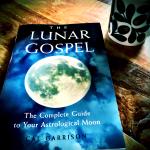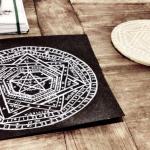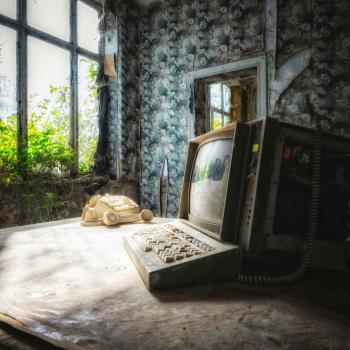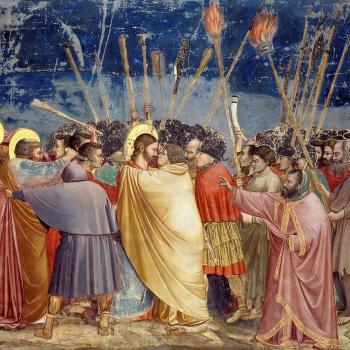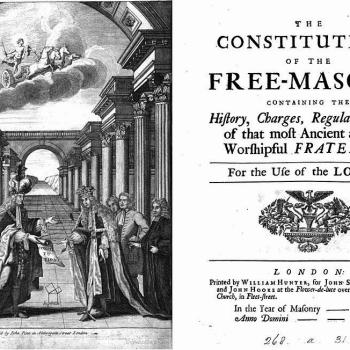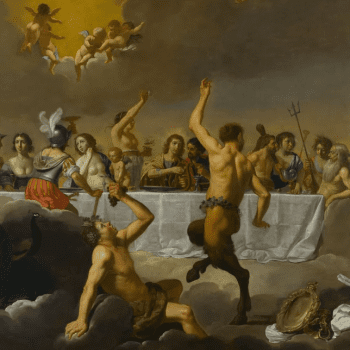
Working magic with the angelic forces is an aspect of the Western Mystery Tradition which has pervaded most systems and traditions for centuries, one way or another. From the late medieval and renaissance magicians and astrologers, cunning men and wise women, to the later nineteenth-century Hermeticists and occultists, the angelic forces have held an inclusive position. With the popularity of Wicca and rise of the pagan witchcraft movement into modern culture, neopagans often find a home in nature-based religions, purposefully eschewing any and all remnant which is a reminder of the faith they left behind. However, we might consider this an unaddressed area of the psyche that needs to be harmonised in order to attain to any form of holism in our beliefs and faith.
In a complete rejection of the religions of the Book, those adherents to pagan paths who rebel wholesale against the same often run the risk of failing to come to terms with the abuses they perceived at the hands of the established religions and their leaders. In discarding Christianity, Judaism or Islam in entirety is to disregard the necessity of the Abrahamic faiths in the laying of the groundwork of modern paganism. Indeed, as a resource to be plundered like a treasure hunter, these faiths are often laden with gems. No religion is born in a vacuum, and so it is that Christianity inherited its philosophy, ritual procedure, tenets and beliefs from those traditions into which it emerged, subsuming many a pagan religion into its folds. Not all of these were y force, but willingly accepted. Like Judaism before it, Christianity retains some of the magic and mysticism which were the signature of the Mystery Traditions to which it is heir, much as the Jewish diaspora adopted a huge wealth of material from the Babylonian exile.
One example of how the rich tapestry of the first centuries of the Common Era moulded the religions which were to flourish in the West, laying the foundation for the New Age and Neopaganism which followed, is Manichaeism. The founder of this religion, Mani (c. 216 – 276 CE), was born in Iran, the cradle of the ancient religions of the Sumerian and Babylonian peoples, Zoroastrianism, and the ideas which fed into Judaism. For a brief period, Manichaeism was the main contender for Christianity and one significantly influential Christian, St Augustine of Hippo, was born of Gnostic Christian parents, was an adherent to Manichaeism before converting to Christianity. That the concepts of the religious influences upon Augustine found their way into Christianity, in a positive or negative light, is inevitable.
In the broader field of modern Witchcraft, the concept of the Angel is sneered at and cast aside as being regarded a throwback to the Judea-Christian traditions which many have rejected or rebelled against. The outright dismissal of the angelic forces as a remnant of the Church-centric religion we were raised in smacks largely of abusus non tollit usum1, a caution against throwing out the baby with the bathwater.

In the remains of the first century Roman town of Pompeii, preserved beneath the ash and pumice of the most famous classical volcanic eruption, several frescoes and paintings depict winged figures. That these aerial beings depict angelic spirits is unmistakable and are evidenced in the Renaissance which drew so heavily upon the Classical styles in art and architecture. This brings us to a very significant aspect of the angels in regards to their place in our divine hierarchy and religiosity – they are not confined to monotheistic or Abrahamic religions. Indeed, these winged angeloi are evinced throughout Classical art, suggestive of a particular world-view that allowed for these spirits as teachers, guardians, messengers, existing in liminal space and time as aspects of the emanations of the heavens, resident between the realm of men (Plato’s Sensible world) and the divine plane (or the Intelligible world of Plato). Indeed, we can find positive identities that are categorically angeloi in Zoroastrian angelology. Furthermore, scholars have reckoned the origin of the angeloi to the Sumerian religion and world-view, which feeds directly into Zoroastrianism, Judaism, Christianity and Classical Greek and Roman perspectives. Later Neoplatonists observed the terms angeloi from the teachings of Plato and Aristotle, teaching that there must be metaphysical beings working as intermediary emanations between the Supreme Mover and that which is moved.
In the Ancient Greek world, we might perhaps equate the concept of the angel with the Daimon of Plato’s Symposium:
…interpreting and transporting human things to the gods and divine things to men; entreaties and sacrifices from below, and ordinances and requitals from above…
In other instances, Plato’s Daimon also relates to a higher being who is assigned to each individual and watches over them, often equated with the Higher Self, or Holy Guardian Angel. In many ways, the depiction of Eros contributed greatly to the image and perception of the angel as a naked, winged being mediating between the gods and man.
In Summa Angelic, student of Madeline Montalban, Leo Vinci, introduces the word angelos as relating first to a human messenger rather than a celestial or divine entity. By the time the Old and New Testaments were translated into Greek, the word angelos was used in place of the Hebrew mal-akh, with both suggesting, as Vinci asserts, “…one that announces; of birds of augury…”. In this statement alone we can discern a good deal of information. As one that ‘divines‘, we have a being who communicates and fixes a message from that which is ‘divine‘, or mutable. Furthermore, the symbolism of birds, as capable of communicating between the earthbound and aerial spirits through augury, lends its power to the angelic figure in the use of birdlike wings, thus conveying that aerial ability. Furthermore, we must return to the Fertile Crescent to find the possible origin of the Ancient Greek term in a word which means ‘Persian mounted courier’, ‘one that announces’, ángaros.

The religion of Zoroastrianism predominated in the pre-Islamic Middle East and during the period of the Israelite exile in Babylon. Toward the end of this exile, the Mesopotamian empire was conquered by the Persian ruler Cyrus the Great, who sent the Jewish people back to Israel where they re-established the Temple of Solomon which had been destroyed by Nebuchadnezzar in 586 BCE. When those Israelites returned home to Judah, they took with them the influence of Mesopotamian and Persian religions and practices. These included, to one degree or another, the influence of Zoroastrian eschatological monotheism and cosmogonic dualism, as well as the ancient angelology and unmistakable DNA of the Sumerian Anunnaki.
These ‘shining ones’ are the seven who are seated before the throne, the children of Anu, the supreme and somewhat absent godhead, associated with the north ecliptic pole and, therefore, the qutub, or cosmic centre and axis mundi. As the ancestor of all succeeding Mesopotamian divinities, and the prototype of semitic sky gods, Anu is accompanied by seven Anunnaki, who are represented in the seven luminaries, or planets. These seven are the origin of the Judea-Christian Archangels, and the luminaries are the visible bright stars which move in the canopy of the heavens. Following the seven Anunnaki were the igigi, who were junior emanations who served the older gods, perhaps as messengers or couriers, before they rebelled.
From the rebellion of the igigi we have the ‘fallen angels‘ of the Book of Enoch and the occult Watchers, or Grigori, from the Greek egrḗgoroi from which is also derived ‘egregore‘. Each of these words indicate ‘to be watchful’, or awake and are likely from the same etymological root. In traditional Witch lore, the myth of the origin of the ‘witch blood’ is derived from the Watchers, who mated with the daughters of men, and whose seed and Promethean light courses through the veins of those called to the Craft. In related traditions, we can find the concept of the Fairy Blood, and associated myths, which are all related to the source of the Witch Virtue among the commingling of angelic vital fluids with human blood.
In the context of ‘fallen’, we must be careful not to consider these spirits as somehow degenerate or disgraced but, rather, having descended from the intelligible to the sensory realms of Platonic philosophy. Therefore, these angelic forces correspond to the planetary luminaries in the chthonic realm, equivalent to the celestial archangel and each sharing its portion upon the planes of the worlds.
In a previous article, I discussed how the planetary hours related to the Airts Compass of the Witch, the astrological influence having considerable influence upon our lives. In addition, we can find here the luminaries and chthonic forces which are to be discovered at each compass point, corresponding to time and space. The four ‘Royal Stars‘ of ancient Persian and Babylonian star-lore correspond to the four Watchers of the quarters, each presiding over their specific quarter and season and represented by Zodiacal images as described in the vision of Ezekiel and later John the Divine’s Book of Revelations.
5 Also from within it came the likeness of four living creatures. And this was their appearance: they had the likeness of a man. 6 Each one had four faces, and each one had four wings. 7 Their [c]legs were straight, and the soles of their feet were like the soles of calves’ feet. They sparkled like the color of burnished bronze. 8 The hands of a man were under their wings on their four sides; and each of the four had faces and wings. 9 Their wings touched one another. The creatures did not turn when they went, but each one went straight forward. – Ezekiel 1 5-9 New King James Bible
And in the midst of the throne, and around the throne, were four living creatures full of eyes in front and in back. 7 The first living creature was like a lion, the second living creature like a calf, the third living creature had a face like a man, and the fourth living creature waslike a flying eagle. 8 The four living creatures, each having six wings, were full of eyes around and within. – Revelations 4 6-8 New King James Bible
And we find ourselves in the mysteries that are shrouded with the many otherwise moribund teachings of the Bible, depicting the merkabah mysticism which flourished as early Jewish mysteries. From these mysteries, centred upon the vision of Ezekiel and describing the seven palaces, or hekhalot, and heavens, emerged the Qabbalah. The merkabah and hekhalot mysteries were poetic teachings which described in fantastic depictions the gates of each of the seven heavens and palaces, as well as the angelic force which guarded them and who would furnish the seeker with the necessary password or technique required in order to proceed. At the centre of the hekhalot, or palace, was the merkabah, which itself is at all times the vehicle, the map and the destination and, at its own heart, the Holy of Holies, the Throne itself.
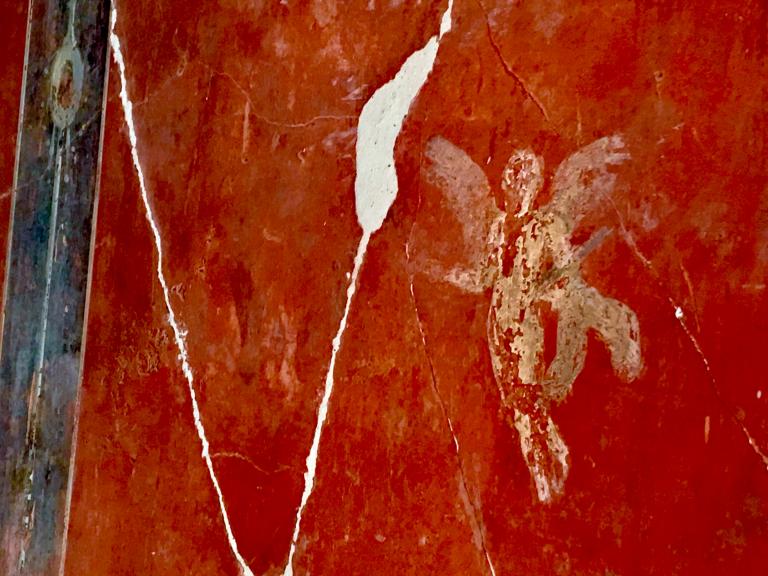
1Misuse does not cancel use
Bibliography
Howard, M. (2004) The Book of Fallen Angels. Capall Bann Publishing.
Vinci, L. (2006) Summa Angelica – Angelic Magic. New Generation Publishing.



